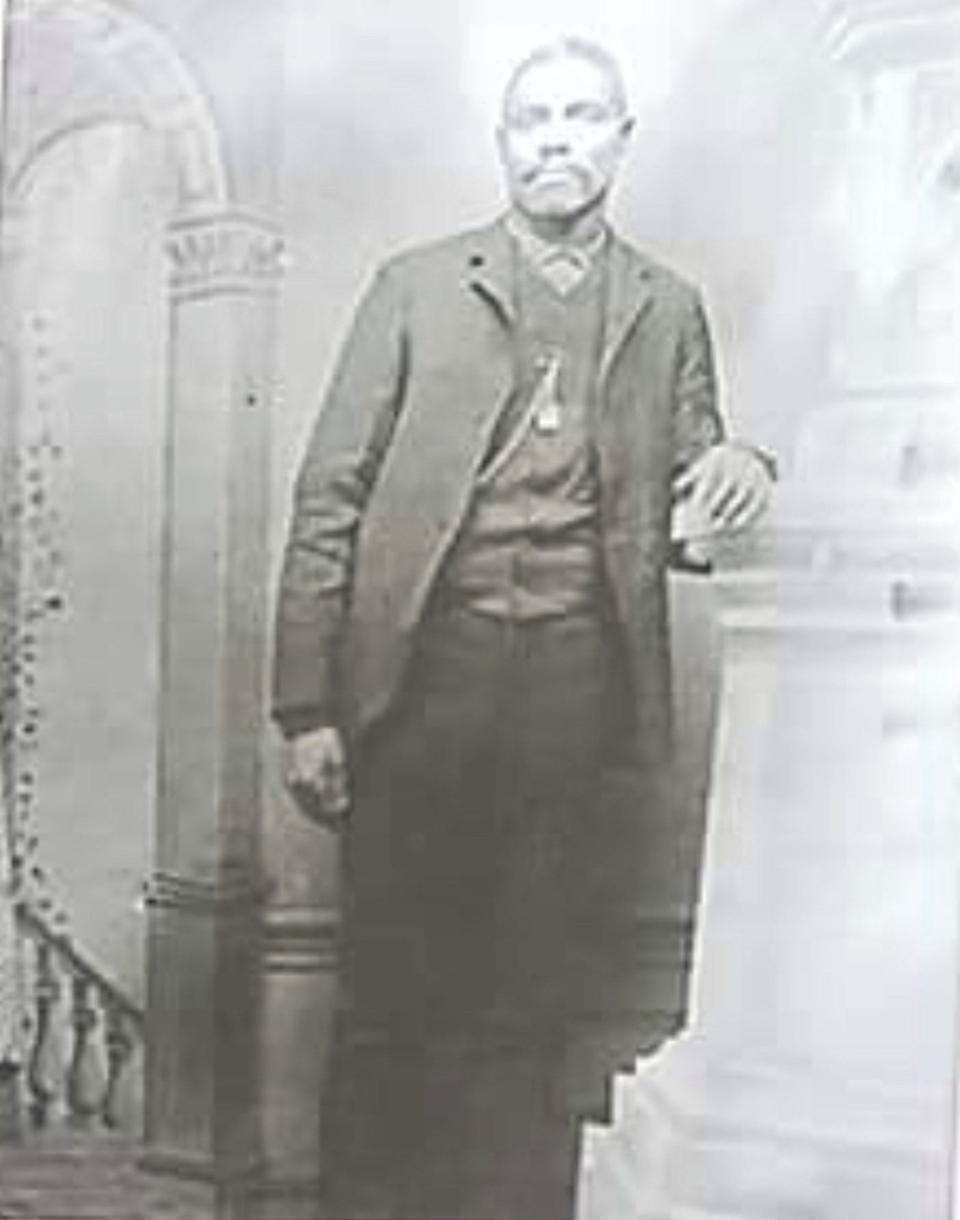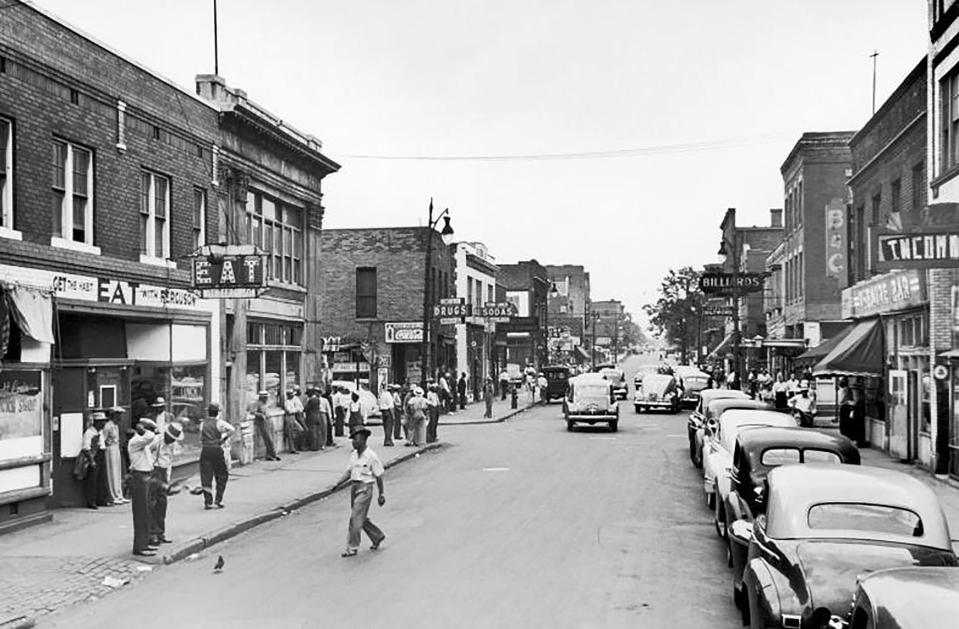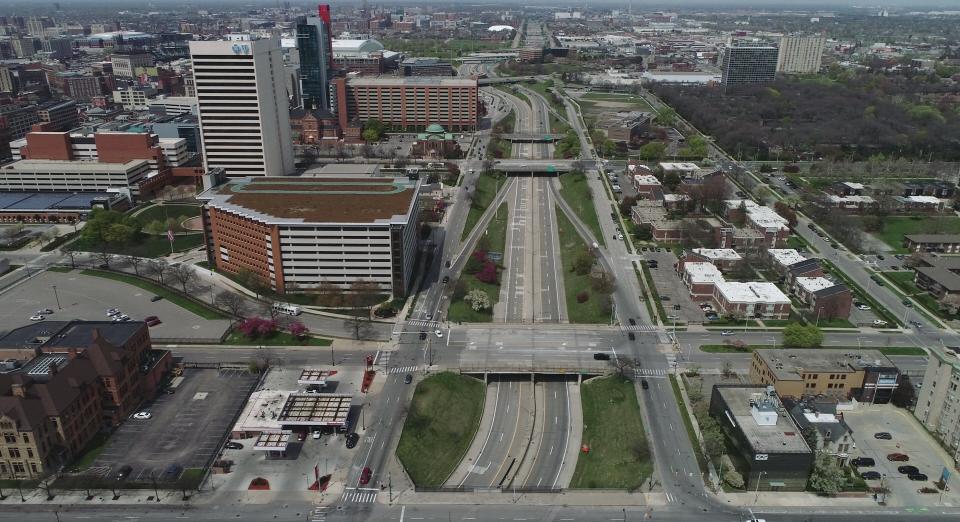We should ask 1 question about $100M grant for Detroit's Black Bottom area | Opinion
For the first time in American history, the federal government explicitly aims to repair past infrastructure decisions that have harmed Black communities. Sixty-four years after I-375 was constructed directly through the once-thriving Black neighborhood of Black Bottom, the Michigan Department of Transportation has received a $100 million Reconnecting Communities federal grant intending to right past wrongs.
Generations of my own family have been affected by such harmful decisions in the past, and I appreciate how far we’ve come to providing inclusive, equitable infrastructure. But as we look toward the future — even with the most noble of intentions — we run the risk of repeating previous mistakes, if we don’t apply lessons learned from the past.
'That is Nicodemus'
My father was born in Nicodemus, Kansas. His great-grandfather, R.B. Scruggs (whose name, Robert, my father carries) is the reason why he was born there.

R.B. was born into slavery in 1860, and his childhood was against the backdrop of the Civil War. His adolescent years were marked by reconstruction. At the age of 18, R.B. became an American pioneer. He and his family took advantage of the Homestead Act of 1862, which accelerated settlement of the western U.S. by granting settlers deed to public land after five years of consecutive use. They became aware that “All Colored People that Want to Go to Kansas can do so for $5.00," as a campaign intended to draw Black Americans to the new community of Nicodemus, in western Kansas, advertised.
In the spring of 1878, R.B. and his parents boarded a train in search of new opportunity. Leaving Kentucky, traveling west, the train made its final stop in Ellis, Kansas. R.B. and his family made the harrowing 38-mile trek on foot across the prairie to Nicodemus, guided only by landmarks.

But the colony was not the thriving Black settlement that was advertised. The folklore of Nicodemus includes a story passed down in my family for generations: Upon arriving at this promised land, a woman in R.B.’s caravan asked her husband, “Where is Nicodemus? I don’t see it.” Her husband pointed out plumes of smoke coming out of the ground and said, “That is Nicodemus.” The families all lived in temporary dugouts.
Several of those who had traveled with my great-grandfather turned around and went back. But R.B. and his parents claimed their property, and built a dugout along the prairie. By the grace of God, they survived the first winter in that temporary dugout home with no tools, no seed and no money. They traded buffalo bones for food, and relied on other settlers and Native Americans to the land for survival.
More:Feds making $1B available to reconnect communities where highways left their mark
More:Opinion: Demolition of I-375 can never erase the sins of the past
But within three years, this all-Black pioneer town was settled and thriving. By 1881, according to the National Park Service, Nicodemus had more than 500 residents, a bank, two hotels, three churches, a newspaper, a drug store and three general stores, with 12 square miles of cultivated land around the town. This, from the pioneering spirit forged by people who previously toiled American soil as forced labor.
But the Union Pacific Railroad's decision to bypass Nicodemus 6 miles to the southwest is equally part of this American story.
Union Pacific was the beneficiary of the Pacific Railway Act of 1862, a federal law that provided government bonds and vast land grants to fund the completion of the transcontinental railroad. After my family's arrival, Nicodemus had continued to grow, and residents anticipated arrival of the railroad, and the boom expected to follow. If there ever existed a deserving equity-minded infrastructure project, it would be for that railroad to pass through Nicodemus.
But this would have required an intentional aim to boost economic development for the benefit of these Black pioneers.
By 1888, it was clear that the railroad would never come.
The railroad instead passed through the town of Bogue, Kansas, founded the same year and named after a civil engineer working for the railroad and founder of the city.
More:Buttigieg: Fixing I-375 means acknowledging those who were displaced to build it
Within a decade, businesses had shuttered, and Nicodemus’ population shrank to a few dozen residents. R.B. was one of them. He raised his family, and developed a successful tree farm, where he would host an annual Emancipation Celebration the first weekend in August. His descendants will hold the 145th celebration in R.B.'s grove this year.
Another project, at the expense of a Black community
Sixty years later, my maternal grandfather took part in another great migration, much more familiar to Michiganders.
When he arrived in Detroit from Birmingham, Alabama in 1947, Black Bottom was known as an overcrowded, undesirable slum. The mostly Black residents rented crowded, dangerous dwellings subject to fire hazards, poor sewage and rat infestation, the result of unaccountable landlords, restrictive covenants in adjacent neighborhoods, and redlining practices that essentially prohibited Black residents from living anywhere else.
More:Detroit's Black Bottom neighborhood: See it then and now
More:How Detroit destroyed Black Bottom and built Lafayette Park:The inside story
While there was nothing to romanticize residential life in Black Bottom, it was still an undeniable cultural epicenter.
In many ways, Detroit’s Black culture, celebrated across the world, has its roots in the Black Bottom neighborhood. The businesses, social institutions and night clubs were an economic engine of their own. My mother recalls feeling left out, as a young girl, when her parents went to see Billie Holiday at the Flame Show Bar in Black Bottom. I’m sure the show was for adults only. But those performances would become events of the past, replaced by terms such as "slum clearance," "urban renewal" and "economic development."

The Federal Housing Act of 1948 funded demolition of many of the housing structures in Black Bottom and adjacent Paradise Valley. But the Federal Highway Act of 1956 paved the way for complete elimination of the neighborhood when it funded highway construction of I-375 over Hastings Street and surrounding city blocks. My grandparents would settle in Ecorse, where available public housing was newly available, and closer to my grandfather’s job at McLouth Steel.
In both Black Bottom and Nicodemus, these infrastructure choices were made without intention of uplifting Black communities.
Whether a railroad avoids a Black community, or a freeway runs through one, such decisions blatantly disregarded that the lived Black experience in these communities required intentional support.
A different way to measure success
Today, at all levels of government, we have officials who are interested in making equitable infrastructure decisions.
Because of that, our state received a $100-million grant to fund the modernization of I-375 freeway in Detroit — the same freeway that destroyed Black Bottom, displaced Black residents, and eviscerated Black businesses. The freeway will now become a street level boulevard. What’s more, the project will create an additional 30 acres of new land parcels directly adjacent to downtown. (Full disclosure: The project will be led by Michigan Department of Transportation in partnership with the City of Detroit, and my employer is likely to bid on some portion of this work.)
U.S. Transportation Secretary Pete Buttigieg has said that one aim of the grant program is to improve life in areas damaged by I-375.
But Black Bottom literally no longer exists. Economic development alone cannot, and should not, be an indicator of success. After all, “economic development” was the reason I-375 was built, and Black Bottom destroyed, in the first place. If economic development is the purpose of this new I-375 project, the question should be, “economic development for whom?” If the purpose is to improve life in the area, we should ask, “to improve the lives of whom?”

Reparations to descendants of Black Bottom business owners have been discussed. There is a proposal for a design competition to create the most innovative and equitable land disposition for the I-375 project. This is the kind of inclusive, restorative thinking that must guide this process.
Past infrastructure decisions were made at all levels of government without considering equity. We now have an opportunity to use equity and inclusion to drive new infrastructure.
But the lessons of Nicodemus and Black Bottom should have taught us: Our society will only achieve what we design.
Michael Griffie is an educator and attorney who serves as Associate Vice President of AECOM, an American multinational infrastructure consulting firm.
This article originally appeared on Detroit Free Press: $100M aims to right wrongs on Detroit's Black Bottom area | Opinion

